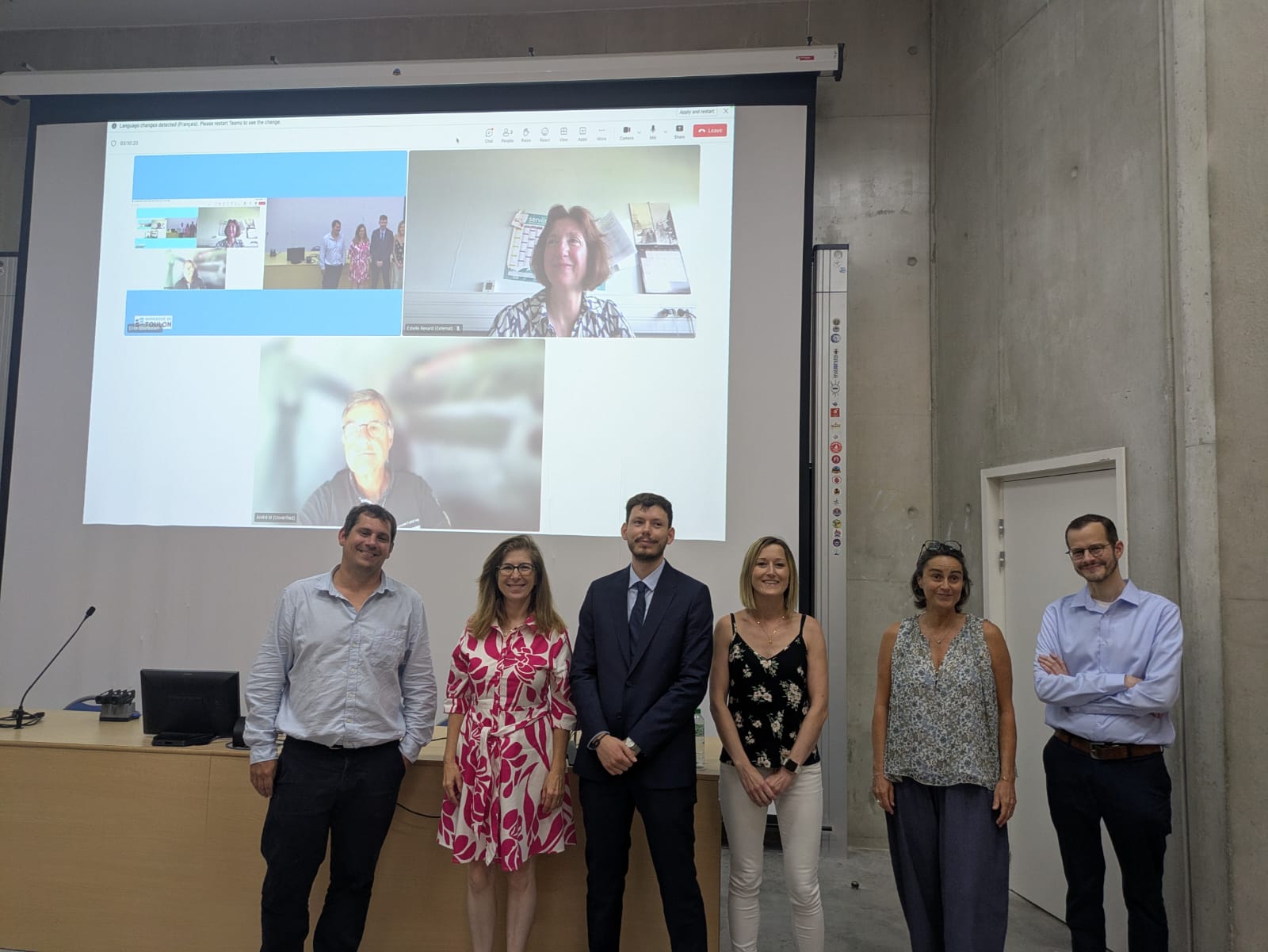PhD thesis defense of Elliot GOURLAOUEN
Elliot GOURLAOUEN, PhD student at MAPIEM lab, under the supervision of:
has defended his PhD thesis in, specialty "Chemistry and Polymers Physico-Chemistry", on the topic:
on July 1st, 2024, at 9:00AM, the Amphitheatre of Building M, Seatech, University of Toulon.
The jury was composed of:
- M. Pierre Yves LE GAC, Ingénieur de recherche-HDR, IFREMER Plouzané (France), Rapporteur
- Mme Estelle RENARD, Professeure des Universités, Université Paris-Est Créteil (France), Rapportrice
- M. Cédric LORTHIOIR, Directeur de recherche, CNRS Paris (France), LCMCP, Examinateur
- Mme Karine VALLÉE, Professeure des Universités, Université de Bretagne Sud (France), Examinatrice
- M. André MARGAILLAN, Professeur Émérite, Université de Toulon (France), Co-encadrant
- Mme Marlène NOBLET, Docteure, Université de Toulon (France), Co-encadrante
- Mme Christine BRESSY, Professeure des Universités, Université de Toulon (France), Directrice de thèse
- Mme Marie-Christine SAINTE-CATHERINE, Docteure, DGA (France), Invitée
Abstract
Antifouling coatings are developed to protect submerged surfaces from the negative impacts of the settlement of undesired marine organisms on. In contrast to traditional biocide-based Self-Polishing Coatings (SPC), poly(dimethyl siloxane) (PDMS) elastomer-based Fouling Release Coatings (FRC), albeit having poor performances during idle periods, have shown themselves as a promising non-toxic alternative. The aim of this PhD thesis was to investigate the elaboration of novel hybrid erodible PDMS/PLGA amphiphilic degradable networks with the aim of synergistically allying the attributes of FR and SP coatings, in order to sustain a constant antifouling activity of the surface independently of the hydrodynamic regime. The synthesis of PLGA-b-PDMS-b-PLGA triblock copolymers by ring-opening polymerization was carried out using a tin-free organocatalyst (i.e. DBU) with the aim of simultaneously reducing reaction temperatures and potential subsequent toxicity. Further exploitation of the catalytic versality of DBU was harnessed to functionalize the synthesized copolymers with alkoxysilane moieties which were be subsequently hydrolyzed and condensed in the presence of moisture, using the same catalyst, to yield a self-cross-linked polymer networks. From a performance standpoint, the aspired seawater-degradability of such coatings was investigated in artificial seawater alongside in situ antifouling evaluation. In this perspective, miscellaneous material characteristics, including surface and thermal properties (e.g. water contact angle and glass transition temperature Tg) were monitored in parallel to mass loss assays to fully understand the expected time-dependent behavior of these novel polymer networks in the marine environment. Additionally, Double Quantum 1H NMR experiments were also performed to provide an in-depth insight on the specificities of these complex networks (e.g elastically active chain fraction) during and prior to immersion in seawater.
Keywords
DBU, PLGA, PDMS, amphiphilic marine coating, surface erosion



